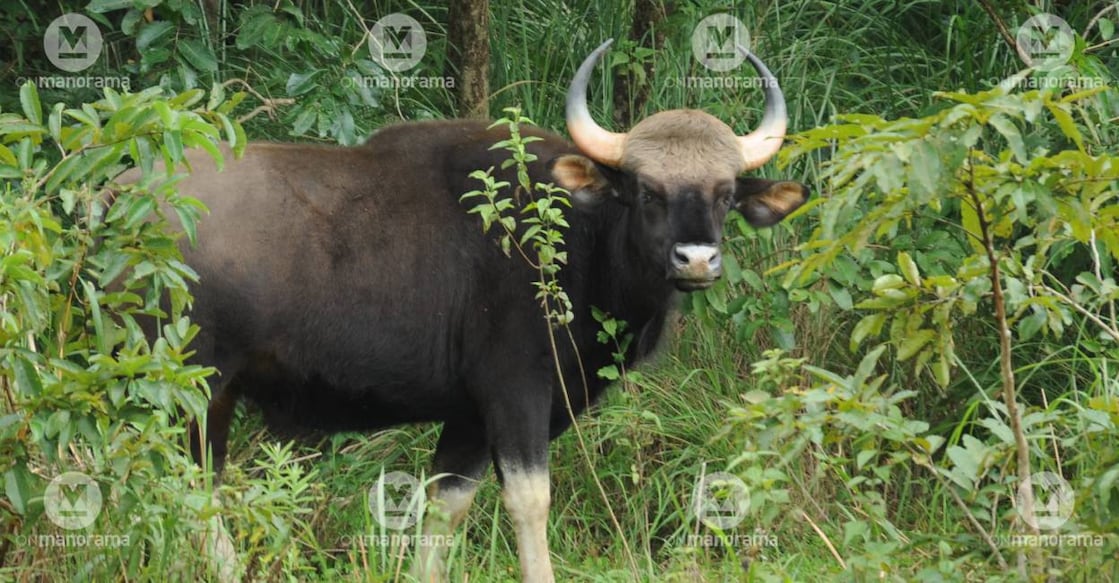Govt clueless on mitigating worsening human-wildlife conflict

Mail This Article
Kochi: Human-wildlife conflict has become acute on the forest fringes of Kerala. Several lives have been lost on both sides, the latest being three deaths of people reported in attacks by gaurs (Indian bison) in two districts. Even as the public outcry against the straying of wild animals into human habitations has grown, the Kerala Government has failed to take effective measures to protect the people, often poor farmers, living on lands abutting the forests.
Reports on attacks by gaurs, wild boars, tigers and wild elephants are becoming frequent in the eastern parts of the State. Surprisingly, wildlife raids on human settlements and farms have become common even in areas, even far away from forest borders.
As many as 81 lives were lost and 1,533 injured in wild animal attacks in the state since June 2021, according to the figures released by the Forest Department. Five people were killed and 11 injured in gaur attacks alone during this period.
The primary responsibility to secure humans from wildlife rests with the State Government and the Forest Department. All that happens after a fatal attack is a police case for unnatural death.
'Onus on Govt'
In 2017, the then-High Court Justice Kemal Pasha declared in a judgment that in places where people have no right to defend themselves from wild animals, the Government is responsible for all losses. He pronounced the judgement after allowing the two orders of the trial courts. Four years later, in a petition filed by two persons from Thenmala, Justice Devan Ramachandran asked the Forest Department to provide protection for the life and property of farmers from wild animals in the areas bordering forests.
Vulnerable areas
As per last year’s statistics, a total of 1,004 places in Kerala are prone to wildlife menace. The maximum wild animal attacks took place in Nilambur North (94), Wayanad South (92), and Wayanad North (70). The forest ranges of Kottayam, Nenmara, Kozhikode, and Thiruvananthapuram are close behind.
Kerala, which has 16,846 km of forest boundary, has only 124 forest stations. Nilambur, which witnessed the most number of attacks, has only seven stations, while Kottayam has six.
The number of Forest Department staff has remained static at 7,247 though the wild animal population has gone up manifold from 1993 to 2023.
In 1993, the number of gaur in Kerala forests was 4840, which shot up to 17,860 in 2011 and to 21,952 in 2023. The elephant count increased by 63% against the national increase of only 17%. If there were 40,963 wild boars in Kerala in 1993, the number shot up to two lakh by 2017.
Compensation eludes families of victims
Compensation for fatal wildlife attack is often delayed. The State Government is yet to provide Rs 14 crore in compensation to families of people killed in wild animal attacks since June 2021.
The next of kin, who have lost their sole bread earner in most cases, are running from pillar to post as their applications were submitted long before being caught up in red tape. Their letters to the Forest Department often go unanswered.
So far the compensation dues of 2021 have been fully distributed in Idukki and Wayanad districts, while that of this year was paid in the Wayanad district alone.
While a sum of Rs 300 crore is allocated in the State Budget towards the distribution of compensation, in reality, an amount less than Rs 200 crore will be available as part of the cost-cutting exercise of the Government.
Over 10,000 applications seeking compensation following damage to houses and properties in wild animal attacks are yet to be processed. Nearly 80 percent of the applications are in connection with snake bites, followed by monkey attack incidents.
The list also comprises attacks by Indian giant squirrels, bees, wild elephants, bears, leopards, tigers, bison, and wild boars.

